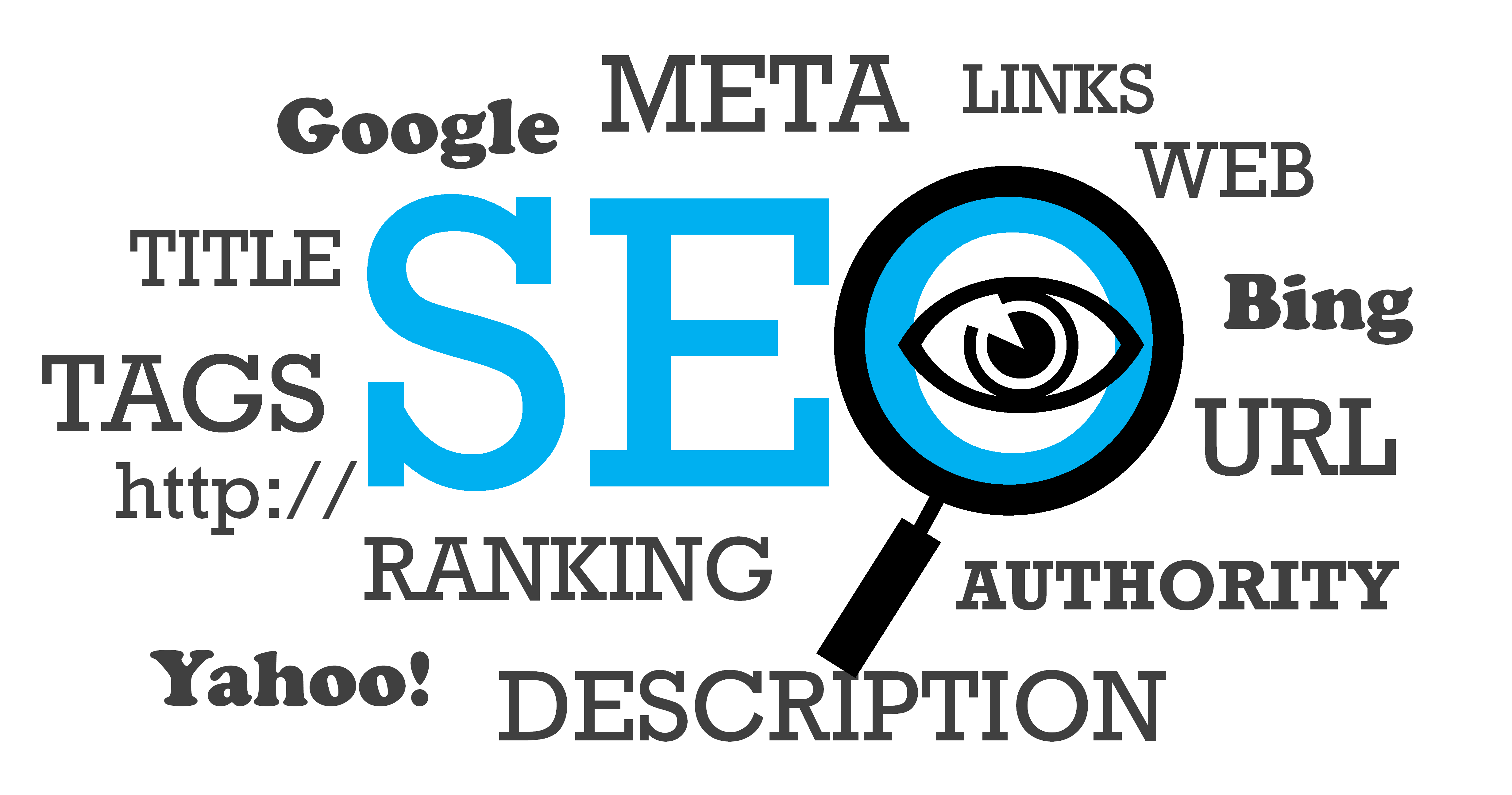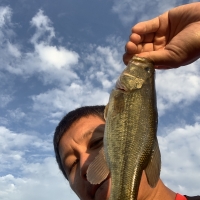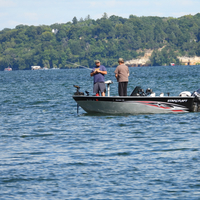Moz, Majestic, Ahrefs and real SEO
SEO
has
been
an
elusive
subject
for
webmasters
for
15+
years
now
but
no
one
has
really
figured
out
how
exactly
search
engines(mainly
Google)
work.
The
modern
era
of
SEO
began
with
the
penguin
and
panda
updates.
These
updates
hit
many
webmasters
hard
and
many
never
fully
recovered.
These
updates
penalized
many
of
the
"blackhat"
SEO
tactics
and
forced
many
people
who
where
just
farming
low-priority
links
like
link
farms
to
re-examine
their
strategy.
Google
has
done
further
updates
to
kill
the
effectiveness
of
article
writing
to
get
links,
link
exchanges,
directories,
and
PBN's(private
blog
networks).
A
variety
of
ever
ongoing
tweaks
have
made
cheating
the
search
engine
far
harder
than
in
the
former
days
where
stacking
titles,
meta
tags,
and
link
farm
links
could
easily
rise
you
to
the
top.
Today
I'm
going
to
talk
about
the
paid
SEO
tools
suites
of
Moz,
Ahrefs,
and
Majestic
and
how
to
use
them
to
increase
your
SEO
rank
for
more
traffic.
This
article
will
also
talk
about
a
few
other
tools
and
things
to
look
for
while
doing
research.

First,
lets
get
one
thing
straight.
The
goal
of
promotion
using
SEO
or
other
means
is
not
to
get
ranked
high
in
Google
or
any
other
search
engine.
The
primary
goal
is
the
drive
targeted
traffic
that
may
result
in
conversions
to
your
website.
It
does
not
matter
if
this
traffic
comes
through
SERPS,
backlinks,
word
of
mouth,
or
any
other
method.
As
long
as
it
is
good
targeted
traffic,
you
want
it.
I've
often
noticed
that
in
terms
of
bounce
rate
and
page
views
per
visitor
that
traffic
that
comes
from
links
from
similar
sites
as
mine
do
better
than
traffic
that
comes
from
organic
search.
For
this
reason,
when
I
build
backlinks,
I
will
try
to
build
dofollow
as
well
as
nofollow
backlinks
instead
of
just
dofollow
links.
A
nofollow
link
from
a
popular
website
within
my
niche
will
often
be
more
valuable
than
a
dofollow
link
from
a
smaller
site
just
because
of
the
amount
of
traffic
it
drives.
Links
from
popular
sites,
whether
dofollow
or
nofollow,
can
also
result
in
links
from
other
sites
that
scrape
or
feed
their
news
and
so
is
important
for
getting
your
name
and
brand
out
there.
Therefore
although
I
do
prioritize
dofollow
links,
I
do
spend
a
lot
of
time
and
effort
to
get
good
nofollow
links
as
well.
If
you
are
serious
about
SEO,
you'll
need
to
first
set
up
the
Google
Search
Console
in
google
analytics.
In
order
to
do
this
you'll
need
to
link
your
Google
webmaster
tools
account
with
your
Google
analytics
account.
This
gives
you
invaluable
data
such
as
which
keywords
are
driving
you
traffic,
your
rank
for
particular
keywords,
and
the
click
through
percentage
you
are
getting
each
on
keyword(this
is
very
important
to
improving
your
search
traffic
without
gaining
positions
in
Serps).
After
you
set
this
up,
it
takes
a
few
days
before
data
starts
to
come
in
so
be
patient.
After
getting
a
few
week's
worth
of
data,
it
is
worth
going
through
and
analyzing
your
keyword
effectiveness
to
Maximize
the
traffic
you
are
getting
from
your
current
SERP
positions.
Doing
this
alone
may
greatly
increase
your
search
traffic
without
doing
any
SEO
at
all.
Next
you
should
head
on
over
the
alexa.com
and
check
out
your
Alexa
ranking
as
well
as
that
of
you
competitors.
A
low
Alexa
ranking
means
that
a
site
has
lots
of
traffic(top
10,000
is
great)
whereas
a
high
Alexa
ranking
means
the
site
has
very
little
traffic(above
1,000,000
is
bad).
However,
bear
in
mind
that
a
good
Alexa
Ranking
can
be
faked
by
using
the
toolbar
and
getting
a
few
friends
to
use
the
toolbar
but
a
bad
one
cannot
be
faked.
If
a
site
does
not
have
any
users
with
the
Alexa
toolbar,
it
generally
means
that
said
site
does
not
have
that
much
traffic.
Also
bear
in
mind
that
certain
niches
tend
to
have
higher
Alexa
ranking
that
others.
The
webmasters
and
web
resources
niche
tends
to
have
inflated
rankings
because
these
users
are
more
likely
to
have
the
Alexa
Toolbar.
When
building
links,
I
find
that
those
links
that
have
good
Alexa
Rankings
tend
to
give
me
the
most
SERP
boost
as
well
as
targeted
traffic.
The
third
thing
a
serious
SEO
should
do
is
subscribe
to
a
suite
of
SEO
tools
in
order
to
fix
site
issues
and
track
backlinks
and
get
down
and
dirty
with
the
SEO
work.
For
this
I
suggest
either,
Moz,
Ahrefs,
or
Majestic.
All
three
have
strengths
and
weaknesses
and
which
one
you
choose
depends
on
what
you
need.
I
know
there
are
other
suites
like
Raventools,
but
these
are
the
three
I
have
sampled,
tried,
and
paid
for
and
I
do
believe
they
provide
what
you
need
for
success
in
SEO.
We'll
give
an
analysis
of
each
of
these
tool
suites
below.
Moz:
Moz
is
probably
the
oldest
and
most
well
known
out
of
the
three
as
even
casual
SEO's
know
their
name.
After
Google's
pagerank
bar
started
going
out
of
favor,
Moz
swept
in
with
their
Metrics
of
DA/PA
and
became
the
standard
in
the
SEO
world.
Although
these
metrics
are
still
useful,
I
find
that
they
are
not
updated
very
often
and
the
data
they
are
updated
with
each
time
they
do
update
is
surpassed
by
the
link
data
from
Ahrefs
and
Majestic.Their
backlink
checker,
open
site
explorer,
is
in
the
same
state.
It
still
gives
a
lot
of
good
backlinks
in
data
but
it
isn't
as
good
as
the
ones
from
Ahrefs
and
Majestic.
Moz
seems
to
be
focusing
more
on
their
community
and
the
knowledge
that
comes
from
it
that
the
actual
SEO
tools
themselves.
Moz
does,
however,
have
a
good
set
of
on-page
tools
to
alert
you
of
errors
on
your
page
and
suggestions
on
how
you
can
improve.
Having
used
MOZ
for
a
month,
I
feel
like
their
various
metrics
and
tools
are
a
strong
suite
but
their
backlink
checker
and
DA/PA
have
been
overtaken
by
the
competition.
However,
if
you
want
to
draw
from
the
community
of
knowledge,
Moz
is
still
worth
subscribing
to.
Ahrefs:
Ahrefs
is
a
very
nice
toolset
for
SEO
professionals,
their
robust
backlink
checker
is
great
and
the
way
you
can
shift
and
organize
data
from
it
is
my
favorite
by
far.
I
used
Ahrefs
for
about
2
months
before
I
decided
to
go
with
Majestic,
but
that
was
mainly
because
of
price.
Ahref's
DR/PR
score
rating
is
pretty
good
and
highly
correlated
with
both
Majestic
and
Moz
but
seems
to
draw
from
a
larger
data
pool
than
Moz.
It
also
seems
to
be
the
one
that
updates
the
most
often
as
your
Ahrefs
rank
seem
to
change
daily.
Their
on-page
tools
telling
you
your
critical
issues
and
non-critical
issues
is
also
great
as
I've
used
it
to
fix
several
serious
issues
on
my
site.
These
are
worth
looking
at
at
least
once
a
week
to
make
sure
you
have
your
page
title
and
other
important
things
correct
on
your
site.
I
used
their
on-page
tools
to
identify
that
all
my
tag
pages
had
the
same
title
and
quickly
fixed
it.
Although
Majestic's
backlink
index
seems
to
be
bigger
than
Ahrefs
and
has
a
better
"fresh"
index,
I
still
prefer
Ahref's
backlink
checker
as
it
allows
me
to
see
one
link
per
domain
and
organizes
it
by
the
time
the
link
was
found,
which
saves
me
a
large
amount
of
time
when
making
contacts
as
recently
found
links
from
competitors
are
more
likely
to
respond
to
your
e-mails.
In
today's
SEO
world,
Ahrefs
should
be
a
strong
contender
for
your
SEO
dollars.
Majestic:
Majestic
is
the
tool
suite
I
use
for
my
own
SEO
as
it
gives
me
all
the
information
I
need,
has
a
great
TF/CF
metric
for
which
to
measure
my
sites
against
competitors
and
keep
track
of
my
progress.
I
had
a
hard
time
deciding
between
Majestic
and
Ahrefs
but
eventually
decided
to
go
with
Majestic
as
its
price
was
half
that
of
Ahrefs
and
it
had
as
much
data
in
its
backlink
checker
as
Ahrefs
did.
It
doesn't
organize
its
link
data
like
Ahrefs
unfortunately
which
means
I
have
to
spend
more
time
each
day
to
sort
though
the
information
but
for
the
price(49.99/month),
Majestic
is
quite
a
bargain.
However,
please
note
that
Majestic
is
just
an
SEO
tool
suite,
it
does
not
have
the
on-page
tools
that
Moz
and
Ahrefs
has
so
if
you
want
or
need
those,
you
may
want
to
consider
one
of
those
suites.
However,
if
you
are
about
building
valuable
backlinks,
Majestic
is
the
way
to
go
as
the
TF/CF
metric,
I
find,
does
correlate
the
best
of
a
site's
popularity.
How
to
use
these
tools
in
conjunction
with
Alexa:
After
you
familiarize
yourself
with
their
three
sets
of
tools(MOZ
and
Ahrefs
both
have
a
trial
period)
and
especially
their
rating
systems,
you
want
to
realize
that
although,
PA/DA,
Ahrefs
Rank,
and
Majestic
TF/CF
are
good
metrics,
they
are
far
from
perfect.
I
do
use
them
to
gauge
my
site
against
others
but
I
also
keep
track
of
Alexa
rank.
As
a
matter
of
fact,
I
find
Alexa
Rank
to
be
a
better
indicator
of
search
traffic
and
the
value
Google
puts
on
your
site
that
any
of
these
rankings
as
overall
traffic
tends
to
be
a
better
predictor
of
search
traffic
than
any
of
these
three
rankings.
If
a
site
does
not
have
overall
traffic,
then
it
can't
have
that
much
search
traffic.
The
opposite
is
also
true.
If
a
site
has
a
lot
of
search
traffic,
then
it
has
to
at
least
have
a
decent
amount
of
overall
traffic.
However,
to
get
really
into
SEO,
you
have
to
use
all
these
ratings
in
conjunction
with
Alexa
rank
to
gain
insights
and
take
some
of
your
competitors
traffic.
One
example
is
that
if
you
see
a
competing
site
that
has
low
PA/DA,
Ahrefs
Rank,
and
Majestic
TF/CF(yes,
check
all
three)
but
still
a
better
alexa
rank
than
you
despite
far
inferior
marks
in
their
previous
three
ranking
schemes,
then
that
is
an
indicator
that
they
have
far
better
onsite
SEO
and
site
structure
than
you
do.
If
you
are
not
getting
much
SERP
traffic
and
you
see
that
they
simply
outdo
you
in
SERP
traffic
and
are
therefore
kicking
the
crap
out
of
you
in
terms
of
competition,
you
can
basically
just
Mimic
what
they
do
and
generally
I
find,
you
will
overtake
them
in
SERPS
if
you
do
the
same
thing.
It
may
take
a
few
weeks
or
even
a
month
or
two
but
if
you
mimic
their
site
structure
and
onpage
SEO
tactics,
I
find
that
the
site
with
better
backlinks
and
higher
ratings
with
the
three
search
suites
I
mentioned
usually
comes
out
on
top.
I've
used
this
strategy
to
significantly
increase
my
Search
Engine
Traffic.
Speaking
of
onpage
SEO
and
site
structure,
here
are
some
tips:
1.
https
URL
over
http
URL.
Yes,
https
does
cost
an
extra
5
bucks
every
year
but
it
will
give
you
a
slight
edge
in
Google
ranking.
If
you
can't
afford
$5
a
year,
then
you
should
go
work
at
McDonalds
instead
of
doing
SEO.
Make
sure
to
get
your
host
to
set
up
your
https
correctly
as
I've
seen
many
people
botch
this
and
it
will
hurt
your
SEO
rankings.
2.
Choose
one
version
of
your
domain
URL
and
301
re-direct
all
the
other
versions.
This
means
decide
if
you
want
the
https
or
http
version
and
the
www
or
the
non-www
version
and
then
301
re-direct
everything
else
to
that
version.
When
you
ask
people
to
link
you,
make
sure
you
ask
them
to
link
to
the
main
URL
of
your
site.
It
is
far
easier
to
do
this
in
the
beginning
than
trying
to
correct
the
mistake
down
the
line.
3.
Make
sure
your
file
extensions
are
accurate
descriptions
of
what
your
content
is
about.
This
one
is
one
I
see
many
sites
not
doing
as
they
either
use
jumbled
URLs
and
non-descriptive
urls.
This
is
a
big
mistake.
While
people
may
like
shorter
URLS(which
isn't
a
problem
these
days
with
things
like
tinyurl),
search
engines
seem
to
have
no
problems
with
long,
descriptive
urls
and
it
does
effect
SEO
ranking.
Sites
with
the
same
DA/PA
and
TF/CF
will
vary
drastically
in
SEO
traffic,
even
if
they
are
in
the
same
niche,
and
much
of
that
will
be
because
one
site
has
good
URL
structure
while
the
other
site
doesn't.
4.
Make
sure
to
put
your
title
in
H1
tags
and
tag
your
content.
Since
many
websites
are
run
by
CMS's
like
wordpress,
make
sure
you
have
h1
tags
and
title
tags
correct
for
your
pages.
Tags
are
also
a
huge
part
of
SEO
as
I've
seen
many
results
go
directly
to
tag
pages.
Many
CMS
treat
tags
like
categories
and
Search
engines
like
big
sprawling
sites
with
lots
of
categories.
5.
Make
sure
your
CMS
is
not
generating
duplicating
titles.
This
is
specifically
prevalent
on
search
pages
of
CMS,
make
sure
each
search
page
has
its
own
unique
title
based
on
the
term
being
searched.
6.
Use
alt
text
for
your
images.
You
want
your
images
showing
up
in
google
image
search
as
well
and
sometimes
in
search
results,
do
not
forget
to
do
this
and
choose
very
descriptive
URLS
for
your
image
filenames,
it
will
help.
These
6
tips
are
pretty
crucial
for
onpage
SEO
success
and
so
many
sites
are
not
doing
it.
If
you
prefect
these
techniques,
you
may
see
search
traffic
despite
low
ratings.
Now
that
we
have
onpage
SEO
covered,
we
can
move
to
offpage
SEO
or
building
backlinks.
I
would
not
suggest
using
a
service
like
Posirank
to
build
links
as
services
like
that
tend
to
use
PBN(private
blog
networks)
which
Google
discourages.
Looking
at
some
people
who
have
used
such
services
in
the
past
and
having
signed
up
for
a
account
just
to
see
the
prices,
I
can
see
that
they
are
very
expensive
and
I
will
not
be
using
them
because
even
if
I
don't
get
banned
from
Google,
it
is
just
not
worth
the
price.
I
also
see
a
trend
where
your
rankings
almost
immediately
drop
off
if
you
stop
buying
links
from
them.
This
looks
to
mean
that
your
link
gets
deleted
if
you
stop
using
their
service
and
these
blog
posts
are
not
permanent.
I
believe
this
is
bad
for
long
term
SEO.
I
will
echo
the
sentiments
of
many
others
in
regards
to
link
services
like
these:
short
term
gain
for
possible
long-term
loss.
I
would
instead
suggest
you
do
off-page
SEO
the
right
way,
even
if
it
does
take
much
longer,
using
backlink
checkers.
For
this
you
will
need
Moz's
Open
Site
Explorer,
Majestic's
Backlink
Checker,
or
Ahrefs
Backlink
checker.
There
are
free
ones,
but
these
three
are
far
superior
to
the
free
ones
and
are
worth
paying
for.
The
best
way
to
use
these
tools
is
to
gather
a
list
of
both
your
closest
competitors
and
the
biggest
players
in
your
industry
and
use
the
backlink
checkers
on
them.
With
the
data
you
get,
go
visit
every
once
of
those
sites
and
for
any
site
that
is
blogging
about
them
or
has
a
list
with
them
in
it,
find
the
contact
link
and
ask
the
webmaster
to
add
you
to
that
list
or
see
if
they
will
blog
about
your
or
accept
a
guest
post
from
you.
Your
response
rate
will
not
be
great
but
every
link
does
help.
All
three
backlink
checker
tools
also
give
you
the
rating
of
the
page/site
those
links
are
on
so
you
can
prioritize
accordingly.
You
must
be
consistent
in
doing
this.
Set
goals
that
you
can
achieve
like
five
contacts
a
day
or
25
contacts
per
week.
After
a
month
or
two,
you
will
see
your
ratings
slowly
creep
up
and
your
SERP
traffic
will
start
creeping
up
as
well.
Getting
guest
posts
on
well-known
blogs
as
well
or
getting
a
feature
on
sites
like
Product-hunt
will
also
give
you
a
big
boost.
Although
I
do
not
encourage
link
exchanges,
it
is
not
bad
to
trade
links
with
sites
with
similar
traffic
as
yours
as
both
of
you
will
be
receiving
targeted
traffic,
just
don't
have
a
page
with
no
content
and
just
outgoing
links.
Just
remember,
that
consistency
is
the
long-term
thing
you
have
to
have
to
achieve
success
in
the
long
run
when
it
comes
to
success
in
SEO.
It
is
not
a
sprint,
it
is
a
marathon.
That
being
said,
I
also
discourage
the
outright
buying
of
links
from
popular
sites.
There
are
a
lot
of
people
selling
guest
posts
on
sites
like
Huffington
Post
or
other
popular
sites
for
upwards
of
$1,000.
This
is
simply
not
worth
it
because
although
the
domain
rank
is
high,
the
page
your
link
will
be
posted
on
will
be
pretty
low
usually.
A
lot
of
times
you
will
not
get
$1000
worth
of
traffic
back
and
it
won't
help
you
that
much
in
your
SEO
efforts.
Organic
link
building
methods
in
the
end
will
win
out
against
buying
expensive
links.
There
are
also
people
out
there
trying
to
sell
high
DA/PA
domains
and
high
TF/CF
domains
for
lots
of
money.
I
strongly
advise
against
you
buying
these
domains.
There
are
spam
methods
to
get
a
high
rating
for
domains
but
many
of
these
sites
have
incurred
Google
penalties
for
using
such
methods
and
as
such,
these
domains
are
totally
worthless.
While
buying
an
old
aged
domain(that
has
a
site
with
it)
in
your
niche
may
be
worth
it,
buying
a
high
rating
domain
much
of
the
time
is
falling
for
a
scam.
I've
seen
numerous
blackhats
in
various
forums
brag
about
how
they
used
illegal
SEO
methods
to
get
a
site
to
a
high
rating,
then
sell
it
to
some
sucker
who
doesn't
realize
the
site
is
penalized
from
Google.
A
good
way
to
check
if
a
high
rating
site
is
penalized
or
banned
from
google
is
to
search
for
the
exact
title
of
the
domain.
If
it
doesn't
rank
on
the
first
page,
there's
a
good
chance
it
has
been
penalized
and
you
should
not
touch
that
domain.
These
are
the
tips
and
trick
for
long-term
SEO
success.
Be
persistent
and
resilient,
make
contacts,
and
remember
your
content,
URL
structure,
and
file
names.
Using
these
tips
and
tools
will
help
you
on
your
way
to
SEO
success.
Have
any
questions
or
want
to
hire
me
for
SEO
consulting,
contact,
webmaster[at]goodfreephotos.com
.













